#the abominable doctor phibes
Text
Lord Mýk Reviews All His Dang Movies
I’m going to review every single movie I own, even the 50-pack of poorly transferred science fiction movies.
So here’s how I intend to work things:
I’m breaking it up into ten movie chunks, and each time I start a chunk I’ll list the ten movies within that chunk. Most of the time it’ll be alphabetical, but sometimes it’ll be… not alphabetical. This is because of things like the stated 50-movie…
View On WordPress
#9 (film)#Abraxas Guardian of the Universe#Addams Family#Addams Family Values#Annihilation (2018 film)#Arrival#Dr. Phibes Rises Again#DVDs#Godzilla#Lara Croft: Tomb Raider (2001 film)#Laser Mission#Marvel#movies#nut job 2: nutty by nature#Reviews#The Abominable Doctor Phibes
0 notes
Text
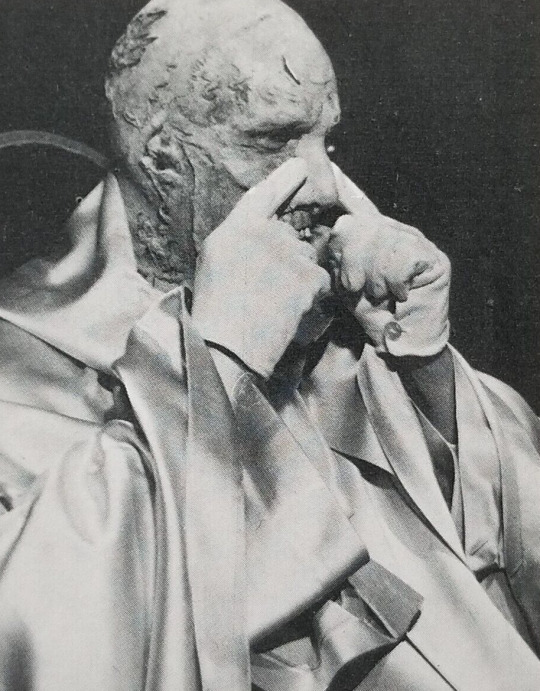
Dr. Anton Phibes
#doctor phibes#dr. phibes#the abominable dr. phibes#dr. phibes rises again#vincent price#horror#black comedy
46 notes
·
View notes
Text
Nine killed you - nine shall die!
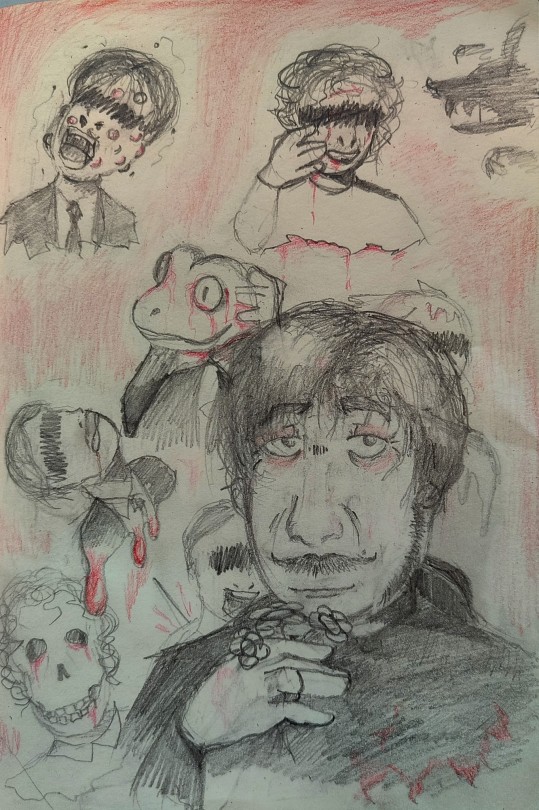
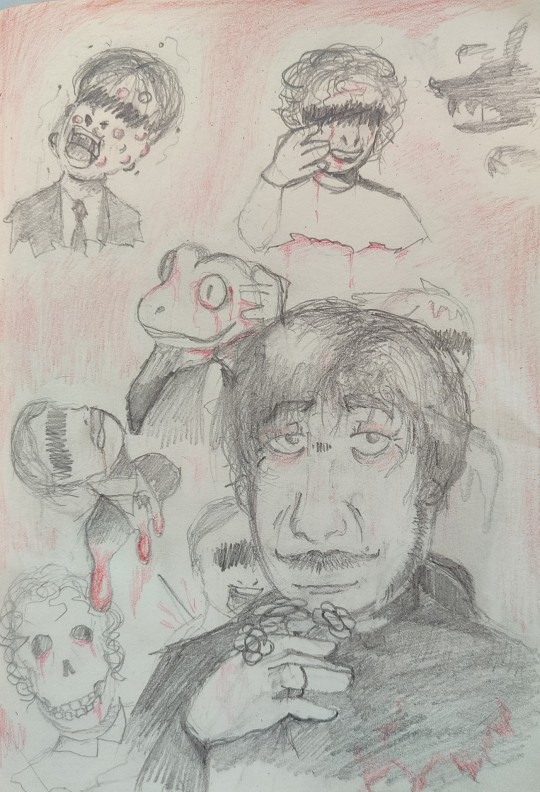
Also - plagues only version.
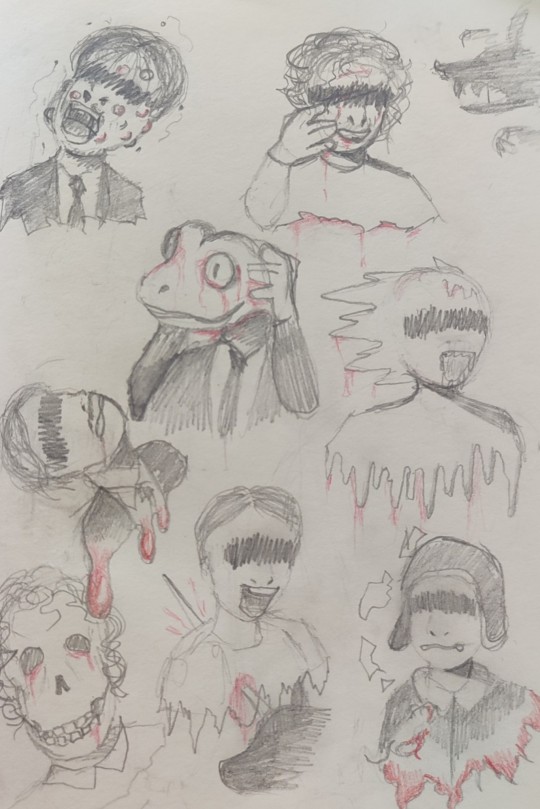
Please watch this fucking movie.
#the abominable dr. phibes#dr. phibes#phibes#doctor phibes#vincent price#old movies#my art#art#artist#female artists#traditional artist#traditional#traditional drawing#traditional illustration#traditional art#traditional sketch#artwork#artists on tumblr#illustrator#illustration#illustrative art
5 notes
·
View notes
Text
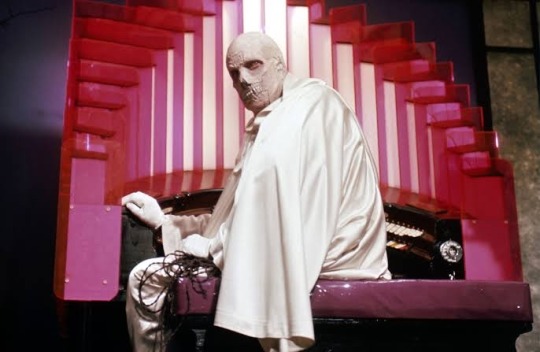
SUMMARY: Doctor, scientist, organist, and biblical scholar Anton Phibes seeks revenge on the nine doctors he considers responsible for the death of his wife.
The mod didn’t have her glasses on while looking for this still so for a split second she thought this was a scene from Rocky Horror, anyway this movie looks like it rips.
#the abominable dr phibes (1971)#horror comedy#1970s#united kingdom#european movie#horror#movies#poll#more than 50% havent heard
40 notes
·
View notes
Text
You kids today don’t know how lucky you are to have Prince of Egypt as a Passover movie. Back in my day, you watched The Ten Commandments and tried to pretend you weren’t extremely hot for shirtless Yul Brynner as Pharaoh!
(Other options were the episodes of Rugrats and Puzzle Place, or The Abominable Doctor Phibes if you had extremely inattentive parents, but they get the plague order wrong anyway.)
55 notes
·
View notes
Text
The Price May Be Right - Number 13
Welcome to “The Price May Be Right!” I’m counting down My Top 31 Favorite Vincent Price Performances & Appearances! The countdown will cover movies, TV productions, and many more forms of media.
Today we focus on Number 13: Dr. Phibes.
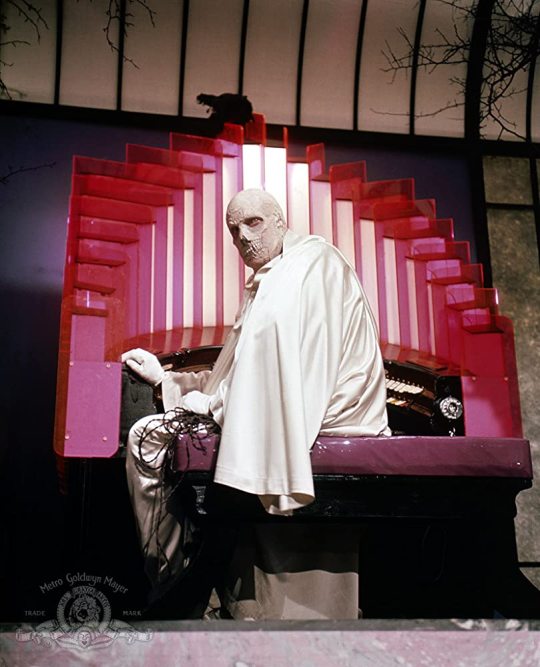
So, here’s a random fun fact for you Batman fans out there: apparently, this character was the inspiration for the version of Mr. Freeze that appeared in the seminal animated story, “Heart of Ice.” And, of course, that version of Mr. Freeze would become the inspiration for the character in nearly every other interpretation – both in and out of comics – to date. So, yeah, if you’re a Mr. Freeze fan, you can thank Egghead for it. :P
ANYWAY…while Vincent did many, MANY horror movies – both serious and comedic alike – the one thing he never got was the chance to play a horror icon, so to speak. Which is to say, when you look at other great classic horror actors over the years, whatever else they do there’s always one specific character for whom they’ll always be remembered. For Christopher Lee and Bela Lugosi, it was Count Dracula; for Boris Karloff, it was Frankenstein’s Monster; even with more modern actors, like Roger L. Jackson and Robert Englund, they have specific horror roles (The Voice of Ghostface and Freddy Krueger, respectively) for which they will always be most chiefly recognized. Vincent never had that; he never got that recognition of having a specific, classic monster he could be identified with. The closest we ever got was that he was so well-known for his work with the stories of Edgar Allan Poe, but that’s a bit of a different issue.
However, in the 1970s, Price DID get a chance to ATTEMPT such a feat, in two films that were part gruesome, gory nightmare fuel and part witty, satirical humor-fests: these were the Dr. Phibes films. The titular character was a deranged musical genius, who wore a mask to hide his hideous skull-like deformities – all elements taken from the timeless tale of “The Phantom of the Opera.” However, the story of the good doctor is rather different: Phibes’ descent into evil began when his beloved wife, Victoria, was stricken with some unholy medical condition. In order to save her life, a risky surgical operation was needed, which was so tricky it required the aid of no less than nine people to even hope for a success. Unfortunately, something went wrong with the operation; as soon as he got the news, Phibes hurried in the direction of the hospital…but was ironically caught in a terrible car crash, and apparently burned to death in the wreck. Husband and wife were then interred together.
The rumors of Dr. Phibes’ death, however, were greatly exaggerated. Phibes miraculously survived the crash, and later rose from the grave hideously disfigured by the accident. He brought his wife with him, and kept her body imprisoned in a sarcophagus filled with honey and special fluids, so that her beauty would forever remain intact. In the first film, “The Abominable Dr. Phibes,” the mad maestro goes on a killing spree, attempting to get revenge on the nine people he blames for the death of his wife and the ruination of his existence. In the second film, “Dr. Phibes Rises Again,” the musical maniac returns, now seeking to resurrect his beloved bride.
The Phibes films were a bizarre sort of pair. In a way, I sort of see these as the precursor to both the Scream films and the SAW movies. Like the former films, the movies combine elements of parodical dark comedy with real chills and gory, brutal death scenes. Phibes, himself, is treated as a serious and tragic character, and the fear factor is upped by his appearance. The mask he wears to hide his deformities is basically just Vincent’s face with some uncanny valley makeup added to enhance the effect, giving Price a particularly ghoulish appearance. This combined with the special voice box Phibes uses to speak after his accident – which causes Price to speak in a robotic, mechanical, droning sort of way that is both odd and genuinely unsettling – makes the character truly chilling. At the same time, however, he’s a sympathetic villain, as everything he does is in the name of his precious Victoria, and while one recognizes he is the bad guy of the story, it’s hard not to feel sorry for him and understand his motivations. The methods through which he offs his victims are pretty messed up even by today’s standards, too.
In all, I would say most of the scares from the film come from Phibes himself. The humor generally is the result of the other characters around him, as well as some the intentionally contrived elements of the plot that are meant to satirize various horror movie tropes. I’m a little surprised there weren’t more films in the Phibes franchise; if there had been, maybe Vincent could have had that one iconic horror character to be recognized by…but, on the other hand, one of the things that made Vincent so fascinating was that he wasn’t someone who could fit into a singular mold, so to speak, and instead had MANY roles for which any given person could recognize him for most keenly. Dr. Phibes was ultimately just one of those parts, but it’s a part well worth remembering.
Tomorrow, the countdown continues with Number 12!
#list#countdown#best#favorites#top 31 vincent price performances#the price may be right#vincent price#actors#acting#horror#comedy#dark comedy#dr. phibes#the abominable dr. phibes#dr. phibes rises again#number 13#movies#film
11 notes
·
View notes
Text
If the tumblr girlies had been blogging in 1973, you'd all have been obsessed with the movie I watched last night:
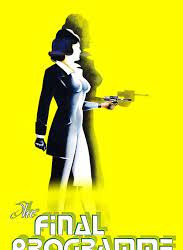
The Final Programme was directed by Robert Fuest, who also brought us The Abominable Doctor Phibes (one of my top ten movies of all time). It is the only film adaptation of a Michael Moorcock novel and it isn't hard to see why: the story begins in medias what-the-fuck and goes on to merrily explain nothing. Occasionally a side character will make a blasé reference to the apocalypse going on outside, then turn back to palmistry, pinball, or wrestling in grey sludge.
Anyway, the movie starts with one of those 'may contain outdated and offensive attitudes' disclaimers so I strapped myself in for some 70s-style racism, but the only objectionable material I spotted was that a Hindu physicist character is played by a white actor. He isn't in brownface (as far as I could tell) and has not bothered to change his native accent (Welsh), so unclear what the intent was here. Anyway, here are some highlights:
Blorbo unlimited, Jerry Cornelius, a goth version of Austin Powers. He wears black nail varnish and subsists entirely on chocolate biscuits and Bells whiskey, which I can respect.
JC's goal at the start of the film is to destroy his ancestral home. For this he wishes to use napalm, which he pronounces nah-PALM (???).
Mysterious redhead whose superpower is eating people and absorbing their life-force. 'What do you do with the bones?' JC asks (I suspect some kind of owl pellet).
PATRICK MAGEE at his villainous best in a little neckerchief!
'The most advanced computer in the world' (friends, it looks like a dishwasher). It is programmed with punchcards and controlled by brains in jars.
Alchemical solar ritual of hermaphroditic union that results in the creation of a hairy-arsed neanderthal messiah.
11/10, highly recommend 👍
15 notes
·
View notes
Text
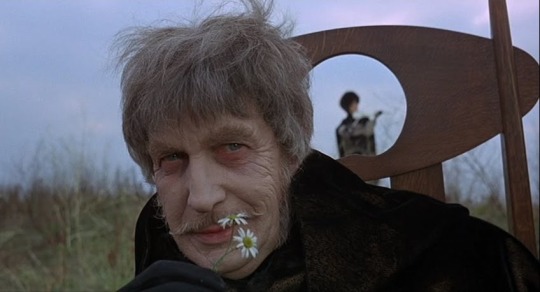
The Abominable Dr. Phibes (1971)
In the late 1950s and 1960s, American International Pictures (AIP) was a minor Hollywood studio with an outsized reputation. AIP, which made nothing but low-budget pictures and B-movies during its existence, focused on cornering the market for teenagers and young adults. Rather than making an endless string of superhero movies, AIP instead relied on its Beach Party series and related films (1963-1967) and inexpensive horror movies (usually involving producer/director Roger Corman). One of AIP’s mainstays for its coterie of horror films was none other than Vincent Price. A longtime character actor for 20th Century Fox, Price had only begun to regularly feature in horror films beginning with House of Wax (1953). From there, he became a regular on AIP’s Edgar Allan Poe adaptations (very loose adaptations, mind you) under Corman’s direction. No matter how dastardly Price’s characters schemes were in his numerous horror films, Price’s almost effortless charm always pored through, to the point that one cannot help but root for his schemes to succeed.
Though Roger Corman was not involved in The Abominable Dr. Phibes (Phibes rhymes with “bribes”), a portion of Price’s fans point to his performance here in the title role as the Vincent Price-iest of all. In this darkly comedic horror film directed by former production designer Robert Fuest (the 1961-1969 TV series The Avengers, director on 1970’s Wuthering Heights), the film’s deliberate campiness demands more absurd motivations, plot developments, and aesthetic choices than some viewers might be comfortable with. In short, this is not the ideal introduction to Vincent Price or AIP’s horror movies. To enjoy the first Phibes film is to be in on the joke, to accept the film’s inherent silliness.
The opening credits help set that mood. As they roll, Dr. Phibes (Price) ascends from beneath a flight of stairs, playing on organ Felix Mendelssohn’s “War March of the Priests” from Athalie. His only company in this fiendish lair are his tall, silent assistant Vulnavia (Virginia North) and his animatronic band, the Dr. Phibes Clockwork Wizards. Reported killed in a Switzerland car accident in 1921 alongside his wife Victoria, Phibes (who carries heavy facial scars and lost his speaking voice in the crash) is hellbent on seeking revenge against the British doctors who presided over Victoria’s failed surgery. Instead of going to therapy, Phibes murders the doctors instead. One after another, the doctors die in increasingly elaborate ways – each homicide inspired by one of the ten Plagues of Egypt as described in the Book of Exodus. After the third doctor dies, Scotland Yard finally begins connecting the dots under Inspector Harry Trout (Peter Jeffrey). Trout soon realizes that the deceased were all directed by Dr. Vesalius (Joseph Cotten). This revelation only begins to unearth Phibes’ wicked plot.
Elsewhere, Hugh Griffith plays a helpful Rabbi and Terry-Thomas plays one of the doctors. Derek Godfrey and John Cater play Inspector Trout’s superiors, Crow and Weaverly, respectively. Aubrey Woods, whom most know as Bill the Candy Man from Willy Wonka and the Chocolate Factory (1971), plays an eyewitness named Goldsmith.
youtube
The screenplay by William Goldstein (who returned for the sequel), James Whiton (his only major writing credit), and Fuest, is no one’s idea of sensible, intelligently structured writing. The transitions between the scenes involving Phibes, his assistant, and the victims to Scotland Yard and Dr. Vesalius are untidy. Goldstein, Whiton, and Fuest attempt to make more of a mystery out of this film than they should, but it only serves to make the investigatory half of the film as a dumping ground of expository dialogue. The scenes with Phibes are the zanier, far more interesting parts of the screenplay – even though the character can no longer speaker (the writers engineer an inexplicable workaround, but this unlikely development can have a pass in the context of this bizarre work). For the scriptural scholars among us, some of the stylish killings of the unsuspecting doctors take liberties with the stated Ten Plagues of Egypt. Though perhaps unacceptable to those demanding strict adherence to the holy texts, the thematic divergences of those murders are still so cockamamie that most viewers probably do not mind.
Dr. Phibes’ murders would make Jigsaw from the Saw series (2004-present) proud. To be clear, The Abominable Dr. Phibes is not a slasher film (a subgenre that was beginning to find its foundations by the early 1970s), but it contains elements that would become slasher hallmarks – an individual committing several revenge killings due to a past event, a sort of catharsis (in later slasher movies, sexual gratification) in the act of killing, and unusual manners of murder. Instead of horrifying the viewer with the wanton death, it is Vincent Price’s performance that keeps The Abominable Dr. Phibes within the confines of comedic horror. Due to reasons that I do not wish to spoil, Price’s Phibes scarcely makes a facial expression aside from his default, neutral gaze. His gait is deliberate and steady. Without the possibility of any facial muscular contortions or Price’s trademark smirk, so much of Price’s performance is through his eyes. From his thousand-yard stares, contemptuous gazes, world weary looks, and bemused glances, Price provides an enormous amount of the film’s soul and tenor with so little of his body. This sounds like a silent film director’s dream, but Price’s performance is a commanding one, in any era. His Dr. Phibes may not be in full control of his movements (thanks to Trevor Crole-Rees’ excellent makeup design), but Price is always fully in control of his acting. No surprise to anyone who knows Price’s work – always dependable to provide his utmost effort, no matter how dire the material.
The screenplay, nevertheless, keeps some emotional distance between the audiences and the title character. Though the film’s absurdity allows the viewer to scrap their sense of morality while watching Phibes slaughter each of the doctors, Phibes’ psychology is inaccessible until the film’s second half. The filmmakers, by not prioritizing Phibes’ mindset as much as they could, continually frame him as the villain amid bumbling detectives, the privileged victims (ensuring that the viewer cares not too much about their deaths), and the prideful Dr. Vesalius (whose hubris erodes as the film progresses, revealing his desperate humanity).
If anybody could be considered a co-lead here, that would be Joseph Cotten as Dr. Vesalius. The underrated and undermentioned Cotten, not at all known for his horror work and more for his collaborations with Orson Welles (namely 1941’s Citizen Kane and 1942’s The Magnificent Ambersons), performs ably here. Cotten replaced Price’s friend, Peter Cushing (Grand Moff Tarkin in 1977’s Star Wars, a regular as Baron Frankenstein and Van Helsing in Hammer horror movies), after Cushing fell ill. Cushing would have been ideal in the role, but never does Cotten act as if the unconvincing dialogue is beneath him, even if he doesn’t attempt to hide his American accent. As Dr. Vesalius, Cotten wonderfully inhabits his character’s desperation as his colleagues meet their ends, as if prophesied.
Set designer Brian Eatwell (1973’s The Three Musketeers, 1976’s The Man Who Fell to Earth) runs rampant with his design to Phibes’ lair. A curious combination of art deco and the garishness of 1970s colors serves the film’s ludicrousness. I am not sure how livable Phibes’ abode is – there are nary any bedrooms or any other amenities depicted – but the central chamber could be an ideal place for a raucous, demented soiree. Vulnavia’s ever-changing wardrobe in each of her scenes is also a delight, thanks to costume designer Elsa Fennell (1964’s Goldfinger, 1971’s Diamonds Are Forever). Perhaps there isn’t too much of association between campy costumes and sets with heartrending motives for murder, but that is exactly what transpires in The Abominable Dr. Phibes.
In addition, a laughably anachronistic soundtrack of swing jazz and Great American Songbook standards dot the film. I was not prepared for the appearance of either Mendelssohn’s “War March of the Priests” nor the legendary song that rounds out the closing credits. Phibes’ introduction while playing the former on organ readies the viewer not to take everything that is about to unfold seriously. For the latter song (again, I dare not spoil this), a brilliant solo trumpet takes the easily recognizable melody and swings it. Lyrically, this song’s placement in the end credits is fitting for what happens to Phibes. But I could not help but laugh the moment I heard the opening notes – a fitting send-off to a gleefully daft movie.
When The Abominable Dr. Phibes arrived in theaters, its poster showed the mutilated Dr. Phibes appearing as if he is about to kiss a woman. Above them read the tagline: “Love means never having to say you’re ugly.” This was a reference to Love Story (1970), with its (in)famous tagline and in-movie quote: “Love means never having to say you’re sorry.” The marketing for The Abominable Dr. Phibes confused audiences – was it a romance? horror? parody? – and the film struggled initially before AIP retooled its advertising to market the film as a horror film. On its low budget, the film was successful enough to warrant AIP to greenlight a sequel, Dr. Phibes Rises Again (1972). That sequel marked the beginning of the end of Price’s association with AIP, due to conflicts over his pay (while AIP’s box office fortunes were dwindling), his lack of satisfaction with the scripts coming his way (not even Price wanted to star in two Dr. Goldfoot movies in two years), and AIP’s plans to replace him with Robert Quarry as their primary horror star.
In the years since the film’s debut in cinemas, The Abominable Dr. Phibes has garnered a deserved cult status. There was no stopping Vincent Price from leaving AIP, but AIP – with their Robert Quarry plans not even a secret – somehow undervalued the actor who was their principal attraction through the 1960s. An essential in Price’s filmography, The Abominable Dr. Phibes defies genre conventions, genre categorization, and any semblance of rationality. For those looking for some bloody horror as the mercury drops, look no further than here. The first Dr. Phibes films guarantees murders with a wink and, though not a smile, an animatronic band playing hits that have yet to be composed.
My rating: 7/10
^ Based on my personal imdb rating. My interpretation of that ratings system can be found in the “Ratings system” page on my blog. Half-points are always rounded down.
For more of my reviews tagged “My Movie Odyssey”, check out the tag of the same name on my blog.
#The Abominable Dr. Phibes#Robert Fuest#Vincent Price#Joseph Cotten#Peter Jeffrey#Virginia North#Hugh Griffith#Terry Thomas#Derek Godfrey#John Cater#Aubrey Woods#William Goldstein#James Whiton#Sean Bury#John Laurie#Trevor Crole-Rees#Maurice Kaufmann#TCM#My Movie Odyssey
3 notes
·
View notes
Text
John Kramer Ain’t Shit: comparing Saw and the Abominable Dr. Phibes
John Kramer is a poor man’s Anton Phibes.
Who is that you ask? The Abominable Dr. Phibes is a horror movie starring Vincent Price that came out in 1971, over 30 years before the first Saw movie. In it, a former organist named Anton Phibes decides to take revenge on the doctors he holds responsible for his wife’s death in increasingly brutal fashion.

There are definitely some parallels between these movies, though I doubt it's intentional. Both Kramer and Phibes survive near-fatal car accidents that act as the catalyst for their later decisions. Kramer survives his attempt to drive off a cliff, which cements his philosophy about the will to live, while Phibes and his wife get into a car accident that disfigures him and badly injures her. Kramer targets people he deems responsible for causing his wife’s miscarriage, such as Cecil Adams and Amanda Young. Similarly, Phibes systematically kills the nine doctors who failed to revive his wife after their accident. Both characters kidnap the children of their victims in order to force their participation in their traps. Both characters rely on assistants to set their traps, and each of their killing sprees eventually end with their deaths.
These are pretty broad strokes similarities, so I doubt that one inspired the other given how obscure this movie is. However, I really like both franchises and will take any excuse to talk shit about Jigsaw’s bullshit philosophy, so here we are.
In terms of the movies itself, both are varying degrees of corny. Saw gets pretty convoluted after the first movie, but still has some harrowing scenes later in the franchise. Dr. Phibes doesn’t take itself very seriously, between the sparse gore and ridiculous death traps that include one victim getting stabbed with a unicorn statue. Both films also lean heavily into their set design and props. Much like Jigsaw’s cluttered workshops and diesel-punk death traps, Dr. Phibes leans heavily into its art deco aesthetic, with elaborate sets and props. Phibes’ crimes are based on the biblical plagues of Egypt, and several symbolic objects are included to that end, similar to how some of Kramer’s traps symbolize the misdeeds of their victims.
Despite the shared elements in these movies, I think Dr. Phibes’ crimes are more straightforward and honest. He kills the doctors who failed to save his wife’s life. End of story. For his final target, he forces this man to operate on his young son in order to retrieve a key from his neck, which he will need to free the boy from a contraption that will spray him with acid otherwise. This is probably the most Jigsaw-like attack in the film, but unlike Jigsaw, Phibes is seems to want the man to succeed. He does not want this man to fail his son the way the group of doctors failed Phibes’ wife. It is a sharp contrast to Jigsaw’s more mean-spirited traps. Although Jigsaw claims his philosophy is that people must save themselves in order to appreciate their lives and change for the better, there is little reward in succeeding. Victims of Jigsaw’s traps can end up there for just about anything, and surviving one trap is not a guarantee that they will never encounter another one.
Take Amanda Young for example. Despite freeing herself from her first test, Amanda Young is still put through two other traps while working for Jigsaw. Her second test, which is originally meant for a different victim, rings especially cruel considering her history of drug abuse. In this trap, she must find a key in a pit of used syringes, which not only echoes her past, but puts her at risk for infection or impairment if she is injected by any of the discarded needles. Jigsaw initially tested her due to her history of relapses, which makes it even crueler that he would stick her so close to such a trap after supposedly ‘curing’ her. Amanda even calls him out on the ineffectiveness of his methods after he tells her he knows that she has been making her traps inescapable. She calls him a murderer, which he has often refuted with the reasoning that his victims have some measure of choice in whether they live or die.
Conversely, Dr. Phibes takes ownership of his revenge. He is killing them because he is angry and grief-stricken. Regardless of whatever precautions they could have taken to avoid his wrath, he still kills them and leaves a calling card as proof. The only exception is his last victim, who he offers redemption to by way of saving his own son. Although there is a strict time limit and a high degree of difficulty, the man being ordered to operate on his son is already a surgeon who knows roughly where the key is located in his son’s neck. Jigsaw’s victims rarely have the medical skills to perform such a task, which is part of what makes their circumstances so dire. They are being asked to make a sacrifice that may or may not save them in exchange for a fighting chance.
In this respect, I think Phibes’ approach is less cynical than Kramer’s. His goal is revenge, but it is aimed at specific people, without an implication of something wrong with the whole of humanity. And in the end, when he gives his final victim a choice in whether his son lives or dies, it is a genuine choice. He equips him with everything he needs to do the procedure on the fly. He is still endangering this man and his child. He is still a murderer, but unlike John Kramer, he knows what he is.
#I have a lot of feelings about this movie okay#horror#the abominable dr. phibes#saw#saw film#saw II#john kramer#amanda young#anton phibes#films#death#surgery#needles#character analysis#long post#Clover muses
6 notes
·
View notes
Text
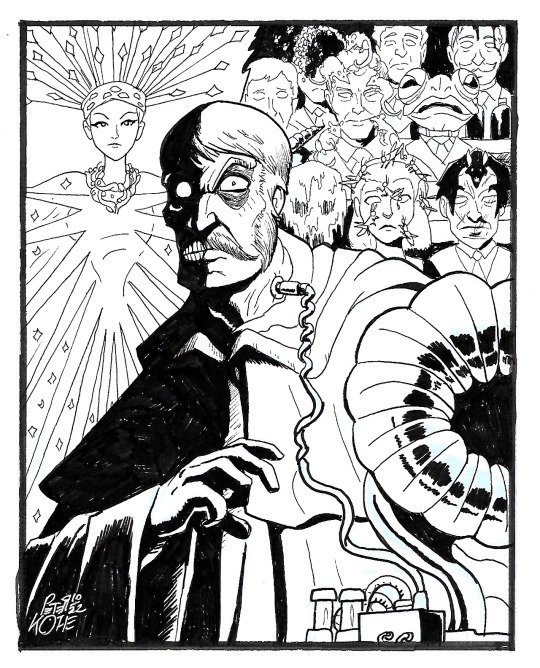
INKtober Day 13-DR. ANTON PHIBES!
Before Tobin Bell was Jigsaw, there was Vincent Price as the Abominable Dr Phibes! The death of his beloved wife and a flaming car wreck, turned this once genius into a ghoulish madman! Aided by his mysterious, female assistant Vulnavia, and a bevy of diabolical, mechanical inventions and death traps, Phibes seeks revenge on the 8 doctors and nurse who failed to save his wife!
#my art#artists on tumblr#art#inktober#illustration#inktober 2022#Inktober 2022 day 13#Vincent Price#the abominable dr. phibes#old school horror#british horror#old school#micron pens#pen and ink#movies#classic movies#cult classic#cult cinema
18 notes
·
View notes
Text
Halloween 2022 marathon: 7-8
The Changeling (dir. Peter Medak, 1980)
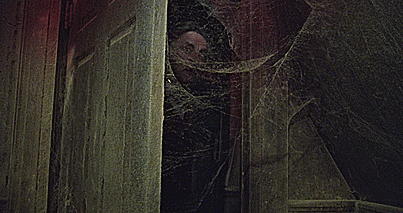
Recommended by @mygreatadventurehasbegun
Musician John Russell moves into an old house in the wake of the deaths of his wife and child. Hoping to find a place to lose himself in work, he instead encounters a series of strange happenings-- odd noises in the night, visions of a drowned child, and objects moving without anyone nearby. As he investigates the history of the house, he uncovers a decades-old conspiracy with greater implications-- ones that could put him in danger.
One of my favorite things to ponder is what distinguishes a horror movie from a thriller? And I think The Changeling is a great example of that distinction. Thrillers are exciting-- they keep you on the edge of your seat. A horror movie fills you with dread, a creeping feeling. You KNOW something awful will happen, but you’re not sure what it will be or when it will strike. And the threat in a horror movie is not so easily banished from the mind or even the world of the film. Thriller villains tend to die, but a horror villain, even after death, lingers and never stops being a threat, even if the protagonist is removed from their influence.
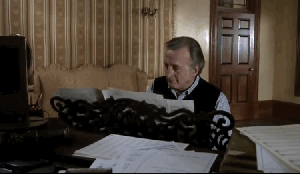
The Changeling is horror, pure and simple. Even before we learn about the house’s violent history, there is the sense that something terrible happened in that house and that something terrible will happen again. Hell, tragedy rears its head from the first scene. Like that earlier horror classic Don’t Look Now, the protagonist’s grief suffuses the film with a piercing melancholy that never lets up. As with comedy and horror, sadness and horror just suit one another well. One intensifies the other.
Overall, this is a subtle haunted house movie. It only skates towards camp territory in one ill-judged scene towards the end, but otherwise, this is a supernatural horror with smart, three-dimensional characters-- a real treat.
The Abominable Dr. Phibes (dir. Robert Fuest, 1971)
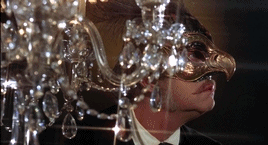
Dr. Phibes-- a flamboyant doctor/biblical scholar-- targets nine doctors he feels were responsible for the death of his beloved wife. He bases the killings on the plagues of Egypt in the Book of Exodus. Much campiness ensues.
I adore Vincent Price, so it’s no surprise that I loved this movie. It’s like a weird cross between The Phantom of the Opera and a sillier take on a slasher. The victims die in the most outrageous ways-- in fact, most of the animals used in the killings are so cute that it makes the terrified reactions of the victims all the more hilarious.
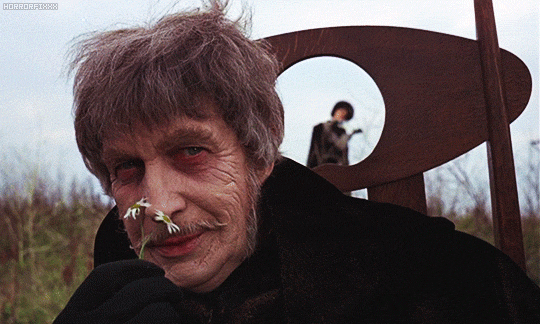
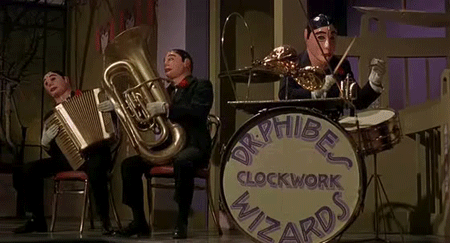
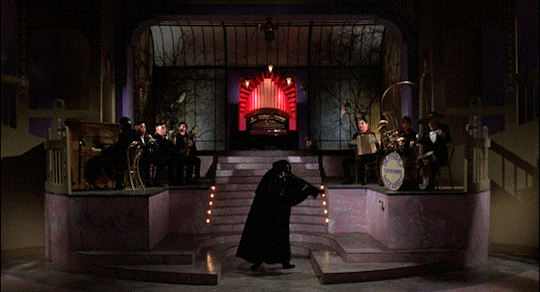
But aside from Vincent Price, the real star of the show is the production design. It’s an anachronistic mashup of the 1920s and the late 1960s. Phibes’ henchwoman dresses in gowns so elaborate they’d make Queen Amidala blush and his band of robot jazz players is just sublime. Everything is so over the top-- it’s wonderful.
On a side note, I was surprised to see this was directed by Robert Fuest, who made one of my favorite adaptations of Wuthering Heights in 1970.
6 notes
·
View notes
Note
Good evening.
1) I just watched "The Abominable Doctor Phibes" because I saw it on your page and I'm screaming of joy, this movie is so beautiful and poetic and everything. So I wanted to say thank you.
2) Could you give me an advise on which movie starring Vincent Price should I watch next? I really loved the vibe of TADP and the House of Wax, but I'm kinda having troubles deciding what to watch next.
The answer will be really appreciated.
Oh yay! So glad you enjoyed Dr. Phibes. There's a sequel to the film called "Dr. Phibes Rises Again" that you may wanna check out.
Also, "The Comedy of Terrors" is a wonderful, campy movie that I honestly think is a favorite of mine.
"The Raven" is amazing!! Loosely based on Edgar Allan Poe's "The Raven", it's a cute, fun movie that is just cozy and it's just...so good.
"The Haunted Palace" is a perfect movie if you're in a spooky mood.
"The Tingler" is one of my favorites, as well. I know I say that a lot, but it's just...perfect. Trust me, you'll like it, if you're a fan of Vincent.
"Witchfinder General" is a brutal movie but it is so fucking good. It's about witch hunting and based on the true story of Matthew Hopkins.
"The Masque of the Red Death" is another Edgar Allan Poe story come to life in one of his more iconic roles. His role as Prince Prospero is perfect. And you just have to see it! You won't be disappointed.
"Pit and the Pendulum" ----- AHHHH! I love this movie so much! And the way it ends...and his acting is just...🤌🏼. Check it out if you get time!
"The Last Man On Earth" is a post apocalyptic zombie/vampire movie based on Richard Mathesons "I am legend". And in my Honest opinion - THIS is the best version!! Vincent does a wonderful job given the fact he's alone, at least for a while, and he's fighting zombies left and right.
"The House of Long Shadows" is a wonderful spooky horror movie with all the legends in horror - Vincent Price, Christopher Lee, John Carradine, and Peter Cushing!
"Madhouse" one of my faves. You just have to see it!
There are SO MANY MOVIES and I can go on forever and ever. I hope these help you out!!
24 notes
·
View notes
Text
I really really really want my main Mother 3 AU couple to have "The Abominable Doctor Phibes" vibes, I f-cking love that movie. I can't sleep because of how good it is, wtf??
3 notes
·
View notes
Text
William Pattison’s Bloodbath Theatre Episode 86: Doctor Phibes Films
Join your host William Pattison, King of Splatterpunk, and his horror host skull, John, as they present the 86th episode of Bloodbath Theatre. Be ready for a double feature of Doctor Phibes films, The Abominable Doctor Phibes and Doctor Phibes Rises Again. Also, be ready for the third episode of Jason of Star Command Season 2 as well as this month’s Criswell Predicts.
https://vimeo.com/874270065
View On WordPress
0 notes
Photo

The Abominable Dr Phibes (1971)
LOVE MEANS NEVER HAVING TO SAY YOU’RE UGLY.
Famous organist Anton Phibes is horribly disfigured in an automobile accident while rushing to the side of his sick wife and presumed to be dead. Once Phibes learns that his wife died on the operating table, he is convinced the doctors are responsible and begins exacting his revenge on all those involved.
1 note
·
View note
Photo
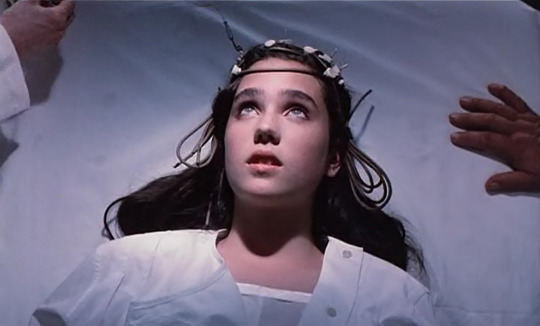


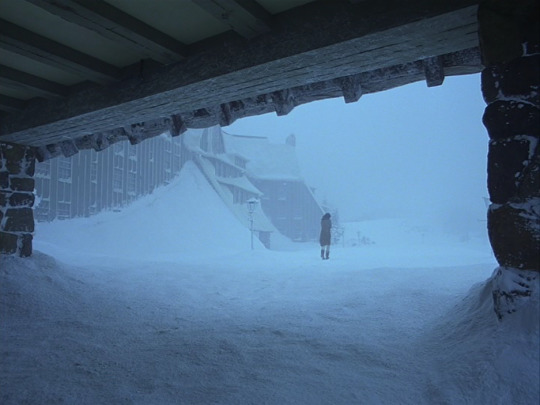


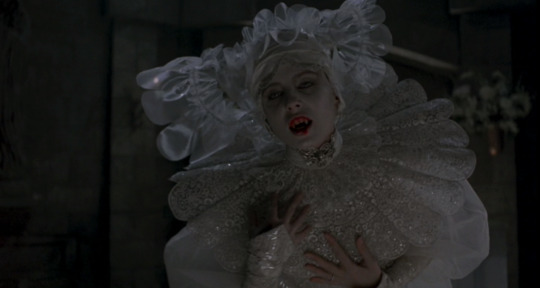
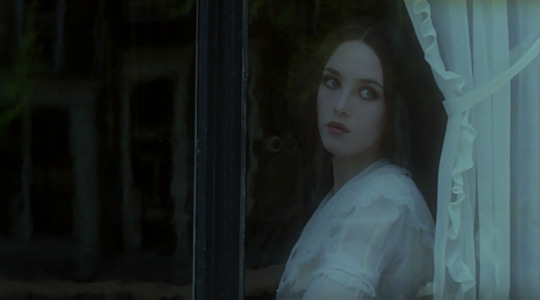
Horror + White
#horroredit#white#horror films#phenomenon#the abominable doctor phibes#valerie and her week of wonders#the shining#viy#hell house#bram stoker's dracula#nosferatu the vampyre
117 notes
·
View notes